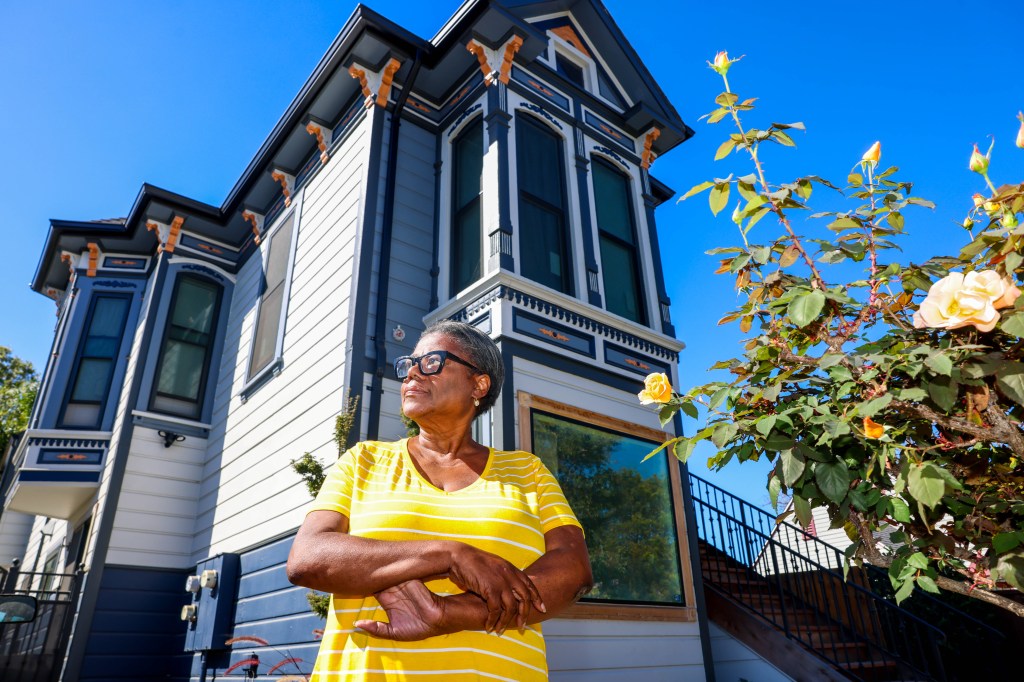Growing up here, Michelle Hailey never imagined leaving the Bay Area. But these days, as the West Oakland property manager grapples with increases in taxes and living expenses, and passes homeless encampments almost daily, she’s feeling differently.
“I sometimes have dreams of the moving truck pulling up to get me out of here,” said Hailey, 60, who has lived in Oakland her entire life. “It’s absurd that we’ve allowed the city to erode in this manner.”
A new poll by the Bay Area News Group and Joint Venture Silicon Valley finds Hailey’s dreams of relocating are shared by many, as 47% of Bay Area residents surveyed said they want to move out of the region in the next few years. That’s actually a slight decline from the 52% of respondents in 2023 who said they were likely to move away. The previous year, 56% agreed they were likely to leave.

For as much economic prosperity as the Bay Area has generated, the financial benefits have accrued to a select few, said Tim Thomas, research director for the Urban Displacement Project at UC Berkeley. The tech industry has created thousands of jobs here in the last decade, but the demand for new housing far outstrips supply, leading to soaring housing prices. Those who can’t afford to stay end up leaving.
Studies have shown major differences between those leaving the Bay they tend to be disproportionately Hispanic and Black and those coming in, who are often more wealthy and educated.
“What that’s doing is recreating segregation by economic means,” Thomas said.
Jacqueline Martinez is among the poll respondents who feel edged out by high housing costs. In 2017, Martinez emigrated from her home country of Guatemala to the United States, where she had a friend in South San Francisco willing to take her in. Eventually, she found her own place paying $2,350 a month for a one-bedroom apartment for herself and her two children, ages 9 and 15.

“We live like sardines,” Martinez said in Spanish through a translator. “It feels impossible to buy a home, or even just provide a decent space for my children.”
To make rent, she works three different part-time jobs — as a cook, a cosmetologist and a phlebotomist. Lately, she’s been thinking about moving to Nevada — where she can afford a larger space for her children and work fewer hours.
“It’s so tiring to have each day be so busy, and not feel like I can function as a mother,” Martinez said.
Tenants like Martinez were more likely to say they wanted to leave the Bay Area — 53% of renters polled by the Bay Area News Group said they would like to move, versus 37% of homeowners.
Still, even some homeowners feel they could do better elsewhere.
Megan Prasad, 31, and her husband left San Francisco last year and bought a condo in Hayward. At the time, it felt like a good investment. But now, with their first child expected in November, the couple has been thinking about moving again, closer to Prasad’s family in Washington state or to the East Coast — someplace more “family friendly.”
“We’re just waiting to build equity in the home so that we can leave,” Prasad, another poll respondent, said.

Prasad could be considered part of the Bay Area’s “transient class” — a term that demographer Issi Romem uses for those who come to high-opportunity areas to jumpstart their careers, then leave at some point in their 30s when they want to start a family. It’s a phenomenon that becomes more pronounced as the Bay Area becomes increasingly renter-heavy, making it difficult to find the kind of stability many people prefer as they age, Romens said.
Jorge Castillo could also be considered a “transient” resident. Drawn by a well-paying job in tech, Castillo moved to San Jose in 2021, paying $2,900 for a one-bedroom near downtown. A few years in, though, he started to wonder why he was paying so much to live in a city where he never felt quite like he found a social circle.
“I found it so weird because all the young, thriving engineers are supposed to be here — but everyone’s just at home with their dog,” he said. “It made me feel very isolated.”
This summer, he left San Jose and moved back to his hometown of Miami. “Ultimately, it was my family and friends that really brought me home,” he said.
Higher-income workers like Castillo are more likely to move farther away. Census data shows Californians’ top destinations for out-of-state movers are Arizona and Washington.
But most of those who move in the Bay Area move within it, or just slightly farther out. The most moved-to county for Bay Area residents outside the core five counties? San Joaquin County, home of Stockton.

















































